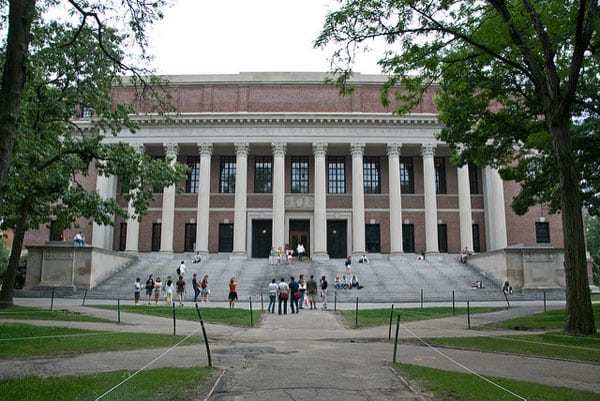
June 12, 2018; Boston Globe, Wall Street Journal, and New York Times
This fall, Harvard’s incoming class of 2022 will number about 2,000 students. According to the Boston Globe, “around 23 percent are Asian Americans, while African Americans make up about 16 percent, [Latinxs] about 12 percent, and Native Americans about 2 percent. The remaining students are white.” Does this class composition reflect a policy of racial and ethnic discrimination, or a successful effort to build a diverse student body? A case slowly moving forward in US District Court is trying to answer that question as the nation continues to resolve decades of struggle to bring about true equity of opportunity.
The case was filed in 2014 by the nonprofit Students for Fair Admissions on behalf of Asian American students who were not accepted by Harvard. They claim that Harvard’s admissions process unfairly held them to a higher standard than other ethnic groups. The Boston Globe noted that the suit relies on “a 2009 study by a Princeton University sociologist that showed that Asian American students had to score 140 points higher than white students on their SATs, and much higher still than Hispanics and African Americans to gain entrance into elite colleges. That research, however, did not consider other factors colleges use, such as extracurricular activities, recommendation letters or essays, and counselor letters.”
From the university’s perspective, its admission policies are fairly administered and designed to ensure their student body is representative of the nation’s diverse population. In a letter to the Harvard community published earlier this week, outgoing University President Drew Faust said the suit’s “claims…rely on misleading, selectively presented data taken out of context. Their intent is to question the integrity of the undergraduate admissions process and to advance a divisive agenda.” She affirmed the university’s commitment to diversity, saying it “will react swiftly and thoughtfully to defend diversity as the source of our strength and our excellence—and to affirm the integrity of our admissions process.”
For SFA, the case is about more than just these students; it represents one more step in a larger effort to eliminate affirmative action in all public and private universities. According to the Wall Street Journal, “Lawyers for Students for Fair Admissions say their goal is to reach the Supreme Court and overturn racial preferences in university admissions, ultimately eliminating affirmative action.” The organization was previously behind a challenge to the University of Texas’s policies, which resulted in a 5-4 Supreme Court decision that allowed race to be used in determining admission when it can be shown to be an essential element in reaching the desired level of diversity. It is also suing the University of North Carolina in a case set to be heard next year.
Sign up for our free newsletters
Subscribe to NPQ's newsletters to have our top stories delivered directly to your inbox.
By signing up, you agree to our privacy policy and terms of use, and to receive messages from NPQ and our partners.
Their effort to end affirmative action has been supported by the US Department of Justice, which has begun its own investigation of Harvard’s admission processes in response from a separate complaint by a group of Asian American students. The DOJ also supported a request that the federal district court make the admissions record that Harvard has produced in support of its policies public, a step that Harvard has opposed, claiming the records contain confidential and proprietary information.
Balancing individual versus collective benefits of public policy is not just an issue for university admission officers. New York City’s eight elite public high schools now use a single measure to determine their class makeup—scores on a special test. As a result, the schools’ current student bodies are anything but reflective of the overall public-school population. According to the New York Times, “Black and Hispanic students, who make up 67 percent of the public-school population, are grossly underrepresented at the specialized high schools,” making up only 10 percent of each class. City leaders are now debating methods to affirmatively change this picture and getting pushback that mirrors the Harvard challenge.
If the ability of communal organizations to create diversity is further restricted, the loss will be significant. Affirmative action policies have for decades been a mechanism of ensuring equal opportunity, particularly for populations who have been historically disadvantaged. According to Julie A. Peterson and Lisa M. Rudgers, writing in Inside Higher Education, “all students, majority and minority, benefit from participating in a diverse classroom and exchanging ideas on a richly diverse campus.…Students gain a powerful set of skills they cannot get anywhere else, which better prepares them to be successful in a global marketplace.” For already disadvantaged groups, losing the support of aggressive efforts to overcome historical barriers will be a major blow.
Those who have historically benefitted from the lack of full diversity see any change as unfair and unacceptable. But those who have been winners at the expense of others may need to step back as the playing field and the rules of the game are adjusted.—Martin Levine












